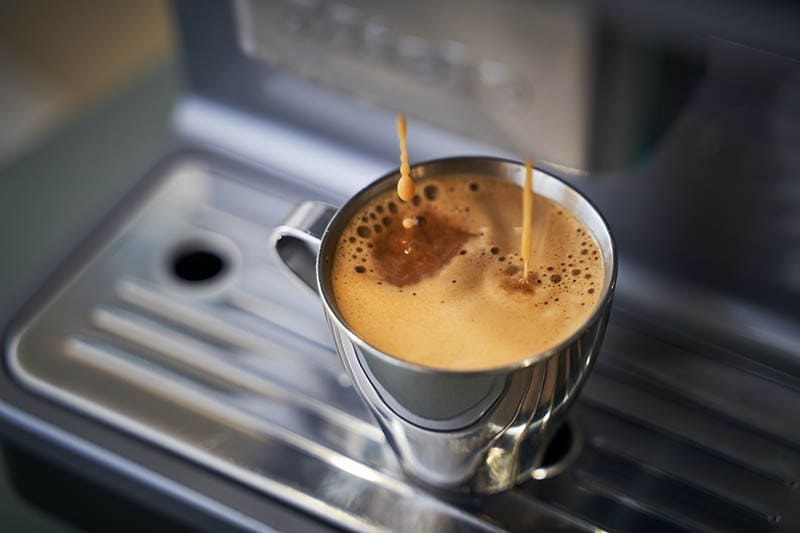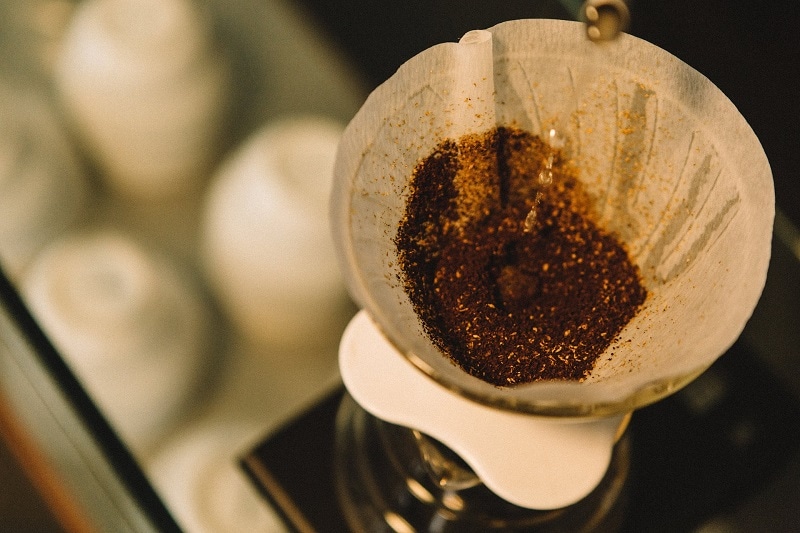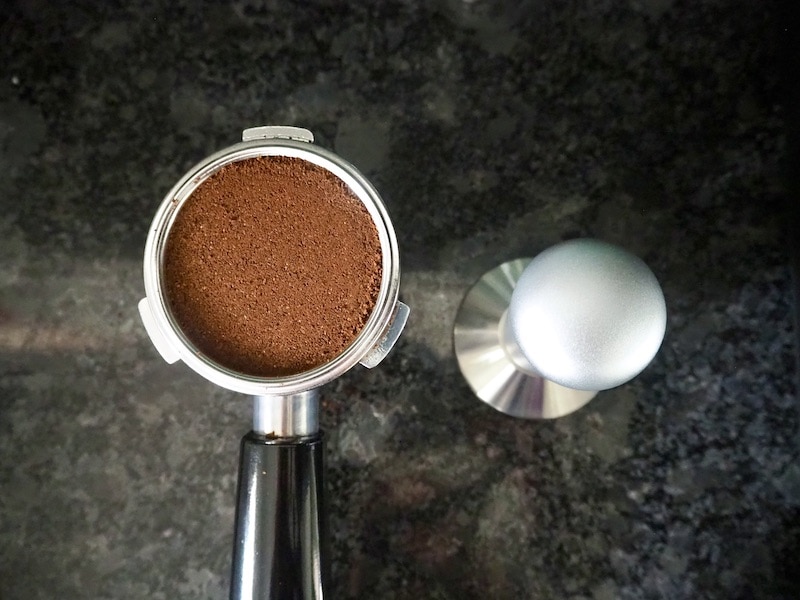
Pulling yourself a shot of espresso that doesn’t taste great can be disappointing. You are left trying to determine what caused the issue so you can fix it next time and avoid the unpleasant taste. More often than not, when an espresso tastes subpar, channeling is the issue.
What’s channeling, you may ask? Simply put, channeling is when there are weak spots in your espresso coffee bed. These spots cause the water to flow unevenly through the puck. When this happens, you are faced with both under and over-extraction resulting in a cup of espresso you’d prefer to toss out. Let’s learn more about channeling espresso, what causes it, and how you can hopefully avoid it.

Why Does It Happen?
As we mentioned above, channeling espresso has a lot to do with how the water flows through the coffee bed. Like anything else, the water moving through your espresso machine is going to take the path of least resistance. This means that certain coffee grounds will be extracted more than others.
Unfortunately, it’s difficult for you to know whether channeling is taking place due to your portafilter being locked into place during extraction. This is especially true if you use the portafilter that came with your espresso maker. Instead of using those basic portafilters most baristas and coffee experts suggest using a naked portafilter, also known as a bottomless portafilter.

What Are the Signs of Channeling Espresso?
While you may not be able to see everything going on inside your espresso maker, there are signs of espresso channeling that you can notice. Let’s learn those signs to help you better understand why your espresso may not be tasting its best.
Shot Starts Quickly
Your espresso pull shouldn’t start until proper pressure is built up. If you notice your shot comes out too early, especially before the pressure builds, then you could be experiencing channeling. You may also notice signs of blonding. Whether this happens once the espresso hits your cup or during midstream, blonding is a major indicator that things aren’t working out correctly inside your filter.
Watch the Drip
Keeping an eye on the bottom of your portafilter can help you determine whether channeling is taking place. If it appears that your espresso’s drip prefers one area over the others, you could have an issue. What you want to see is an even distribution, but don’t expect it to be perfect. A good cup of espresso should at least flow through more than one area. You shouldn’t see your portafilter during this process.
Jets of Water
One of the messiest signs of channeling espresso is when jets of water, small or not so small, emit from the bottom of your filter. This dramatic sign of channeling usually ends up in your machine’s drip tray but could find its way onto you if you’re standing too close.
Crema Isn’t Up to Par
If any of these other signs take place, and you notice your crema is paler than it should be, this is another sign of channeling. You could also notice a lack of crema to indicate that there’s an issue.

How Can I Stop Channeling Espresso?
Learning how to pull a great cup of espresso takes lots of practice. You will find that several factors must work together to create a tasty cup. If you notice channeling when trying to pull a shot of espresso, there are a few things you can tweak in hopes of minimizing this issue or stopping it altogether. Let’s take a look at those now.
Tweak Your Recipe
Making espresso by following a solid recipe can help put an end to channeling. Often, the biggest issue you face with your recipe is the grind of your beans. If your beans are ground too fine, channeling can be increased. The best ratio to follow for a good pull is between 1:1 and 1:2.5. You’ll also want to stick to a timeframe of roughly 20 to 35 seconds.
Distribution of the Grinds
You may not realize it, but how your coffee grounds are distributed in your portafilter can determine how good your espresso shot is. If things aren’t evenly distributed, channeling is more likely to take place. Your distribution doesn’t begin when you pour the coffee into the portafilter. It begins with grinding. Each grinder is different and will dispense in a different fashion. To avoid channeling, you want an even spread and avoid grinders that focus on particular areas of the filter. You can help this process by rotating your portafilter in small circles to help even out your distribution.
Use Good Tools
Having a good espresso tamper can help fight channeling. When using your tamper, try to keep the grinds in your coffee bed as even as possible. A slant of any sort can cause the water flow to favor one side and cause channeling to occur.
Choose the Right Filter
We’ve already mentioned naked portafilters. If you truly want to fight channeling espresso, avoid using the normal portafilter that comes with your machine and choose a naked, or bottomless filter. This allows you to better view the flow of water through the filter and spot potential problems that could be taking place with your espresso pull.

Frequently Asked Questions (FAQs)
How does espresso taste when channeling happens?
Unfortunately, not so good. Due to the uneven flow of the water, your espresso can be unbalanced. You’ll notice both a weak and sour taste that is overly bitter. In all honesty, it makes it quite difficult to finish your shot.
What is espresso blonding?
Yes, blonding is a sign of channeling, but what exactly is blonding? It’s when the color of your espresso shot changes from the normal dark color to a pale brown. This normally shows the end of extraction. If this happens in the early stages of pulling your shot and throughout the rest of the process, it’s a clear indicator of an under-extracted shot. This issue can be caused due to channeling.
How do I choose the right tamper?
When choosing a tamper, it is best to ensure it works well with your portafilter. You’ll need one that has the right diameter, weight, and material. You need a tight fit so your coffee bed is kept even.

A Quick Reference Guide
- Watch the underside of your filter for gaps in the flow
- Shots start too quickly
- Blonding starts early in the process and continues throughout
- Crema is not up to par
- Tweak your recipe and use the proper ratios
- Properly distribute your grinds
- Use good tools for tamping
- Use a naked portafilter so you can keep an eye on the flow

In Conclusion
If you experience channeling when pulling a shot of espresso, don’t feel alone. The best baristas in the world have dealt with this issue, and most likely will again. Don’t let it stop you from making your own espresso and getting better at it. With a little practice, and following a few of the tips we’ve mentioned above, you can easily put an end to channeling and make a great cup of espresso. Before you know it, you’ll be ready to put your pulls against those of your favorite coffee shops.
Featured Image Credit: NATHAN MULLET, Unsplash













